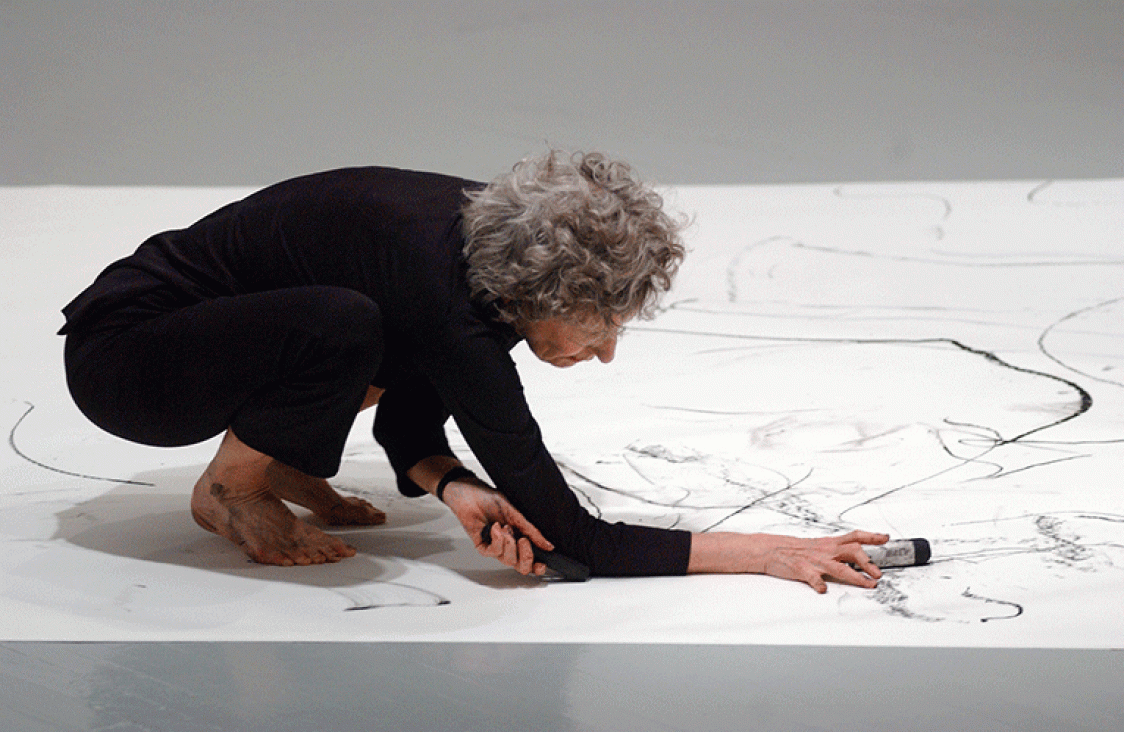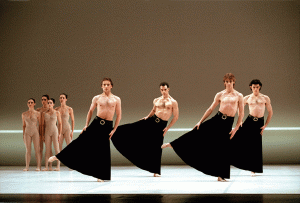TRISH BROWN: SO THAT THE AUDIENCE DOES NOT KNOW WHETHER I HAVE STOPPED DANCING
WALKER ART CENTRE
Artist: Trisha Brown
Organiser: Peter Eleey
Dates: Till July 20, 2008
Website: /www.walkerart.org
The Walker Art Center presents the exhibition Trisha Brown: So That the Audience Does Not Know Whether I Have Stopped Dancing, the centerpiece of a spectrum of programs honoring the 40-year career of this contemporary dance icon at a moment of increasing interest in the broad sweep of her work and its influence. Providing an in-depth look at Brown’s visual arts practice, the exhibition features a survey of the artist’s drawings going back thirty-five years, a live early performance work in the gallery, and videos of seminal early performances.
On Thursday, April 17, prior to an exhibition preview and reception, the artist made a rare solo appearance in the gallery to create a work on paper for the exhibition that synthesizes drawing and dance. As an extension of the exhibition, the Walker is presenting four of Brown’s early site-specific performance works in the Sculpture Garden and Loring Park on July 5, including the first U.S. presentation of Man Walking Down the Side of a Building since its original realization in SoHo in 1970.
While Trisha Brown is best known for her innovative choreographies that revolutionized modern dance, she has for many years made drawings and other works beyond the stage that integrate the performing and visual arts. Brown first achieved recognition as part of Judson Dance Theater, the center of dance experimentation in New York that occupied a central position in the multidisciplinary avant-garde of the 1960s; she went on to found the renowned dance company bearing her name.
Drawing has long featured prominently in Brown’s maverick practice, shifting from a tool for schematic composition into a fully-realized component of her broader investigation into the limits of her own body. She pioneered within dance the idea of the body as a field with varying centers, encouraging her performers to conceive of dances in which movement could begin in a variety of locations throughout their bodies, by turns embracing and defying gravity.
Early in her career, Brown created works in wh ich performers walked on gallery walls or down the exterior façade of a building—rather than on the floor—and similar reorientations of her dancers’ and audiences’ relationship to their environment can be found throughout her practice. Whether she is working within the frame of a sheet of paper, on the wall, or on the stage, Brown delights in the play between structure and improvisation, between repetition and invention, and between choice and chance. “I get involved in the mystery of space,” she says. “I have the same adrenaline and heartbeat going as I enter the paper as I do going on stage.”
Describing her early studies, Brown says that she learned how to “fly,” and that sense of being aloft aptly describes much about her: an artist floating between the ground and the air, between the disciplines of drawing and dance. “I may perform an everyday gesture,” she once warned, “so that the audience does not know whether I have stopped dancing,” and her drawings might best be seen in this light—as gestures which may appear at moments to be distinct from her dancing, but which rarely are.
Support: The Year of Trisha is made possible by the National Endowment for the Arts American Masterpiece: Dance Initiative, administered by the New England Foundation for the Arts. Additional support is provided by the National Endowment for the Arts.
Address:
Walker Art Center
1750 Hennepin Avenue
Minneapolis, MN 55403
612.375.7600
www.walkerart.org
Image Credits:
Trisha Brown; Photo: Kelly & Massa Studio



